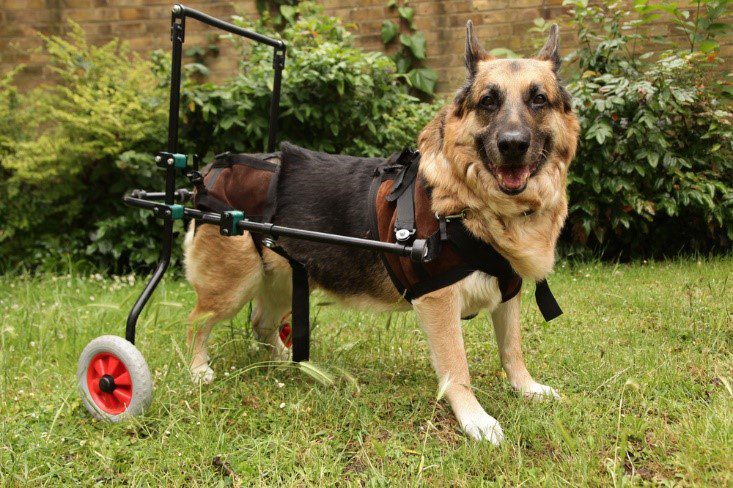Many people with large dogs are familiar with hip dysplasia because, being a genetic condition, it affects certain breeds more, but any dog of any size can develop it. Hip dysplasia in dogs is when the ball and socket joint of the dog’s hind legs – the equivalent of our hips – doesn’t develop properly during the growth period. The condition usually affects both sides where the ball doesn’t fit properly into the socket, and it can vary in its severity.
More about hip dysplasia
The hip joint, located in the pelvis, consists of a ball-and-socket structure. Everyday activities such as walking, jogging, and even sitting need the use of this amazing joint, which allows for a wide range of motion. The acetabulum of the hip bone is a functional, spherical socket that the femur (thigh bone) fits into.Hip dysplasia occurs when the ball and socket joints in the hips do not line up properly or develop normally. As a result, rather than gliding effortlessly, these components end up rubbing and grinding against one another. Misalignment and improper movement may cause pain and distress for our animal companions. The wear and tear on the joint increases with time. After a while, it stops functioning normally.
Causes of Hip Dysplasia in Dogs
Hip dysplasia can be genetic and affects large, heavy breeds like the St Bernard, and larger working dogs such as German shepherds. It’s rare in small dogs, but it does happen.Other factors such as
diet (over feeding), excessive exercise, and weight gain can also be a factor. It’s generally an imbalance between the muscles and the bones while the dog is growing that causes the joint to pull apart which, in turn, causes instability of the hip joint and other problems.
Symptoms of Hip Dysplasia
Symptoms can be present when the dog is very young, or when the dog is much older. It all depends on the severity of the condition.Since it’s a very painful condition, the first sign is a reluctance to run and jump around, something you’d notice in a young dog but not so much in an
older dog. Your dog might have trouble getting up or lying down, seem uncoordinated, sway when they walk or stagger with sudden lameness in the hind legs, which is especially occurrent in younger dogs.
Treatment
If you notice anything unusual with your dog’s hind quarters,
consult your vet for a thorough examination to diagnose hip dysplasia. Treatment depends on the age of the dog and the severity of the condition, but it can include weight management, medication for the pain and inflammation and to try to repair the cartilage.As a last resort, there are a variety of surgical procedures that can be performed, with the most extreme being total hip replacement.
Prevention
A reputable breeder of large dogs prone to hip dysplasia will do their best to try and breed it out, but since it’s so prevalent in some breeds, the next best thing is to have their breeding dogs x-rayed and vet certified to ensure they breed dogs with the lowest likelihood of developing it.If you have a pup, you can make sure you feed the correct diet and provide appropriate levels of exercise to prevent excessive growth and, later, obesity.
Causes of Hip Dysplasia in Dogs Veterinary Hospital Port Kennedy
Your pet’s health and comfort are our top priority, so if your dog shows signs of hip dysplasia, bring them in to the vet clinic at Port Kennedy Vets for assessment and early treatment. Call 08 9524 6644 or
contact us online for any enquiries or health concerns regarding your pet. Our wellness programs make pet care easier, and with affordable monthly payments, they’re an investment in the health and well being of your beloved pet.
Things to do in Mandurah whilst you leave you pet with us to heal.



